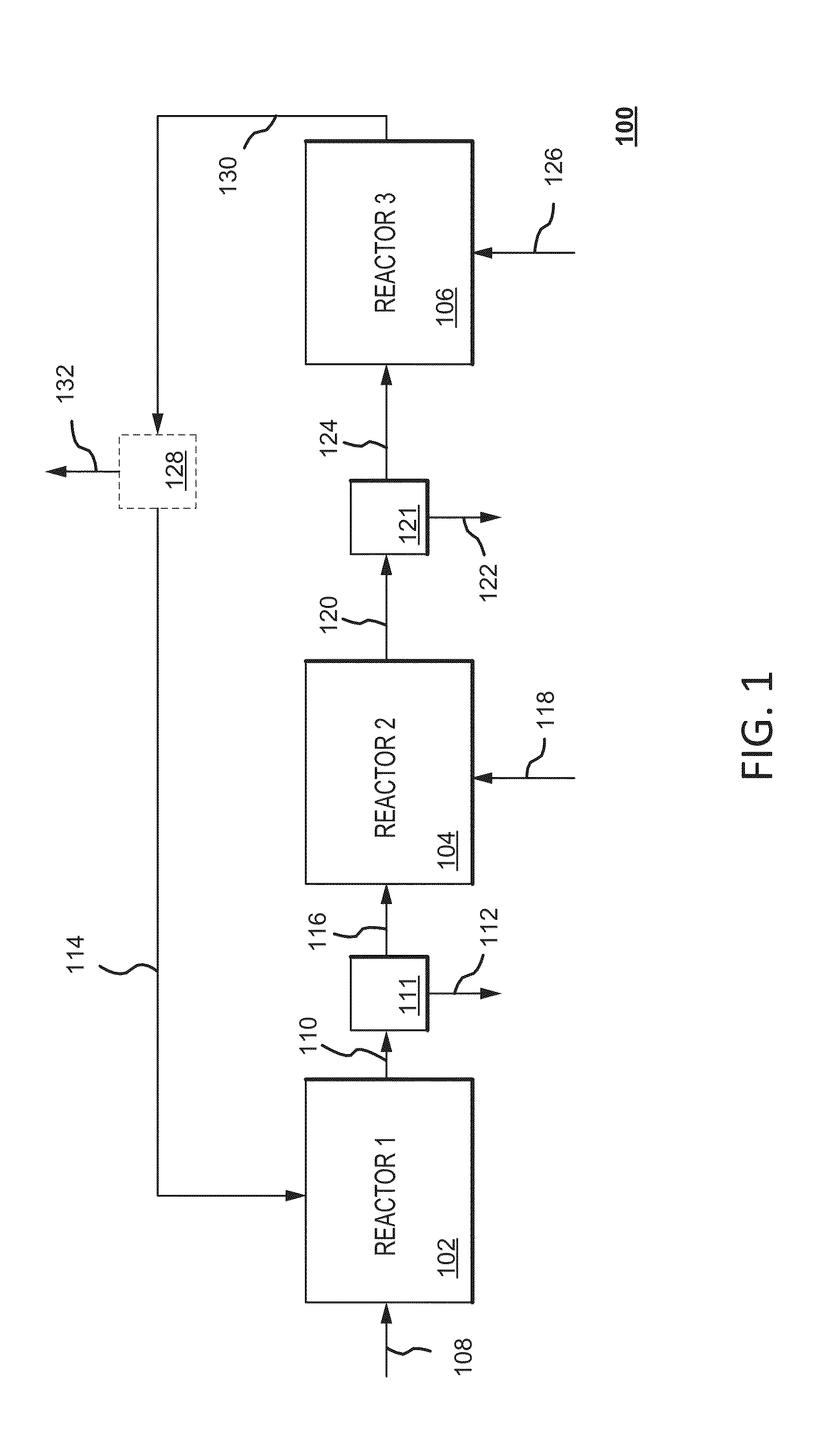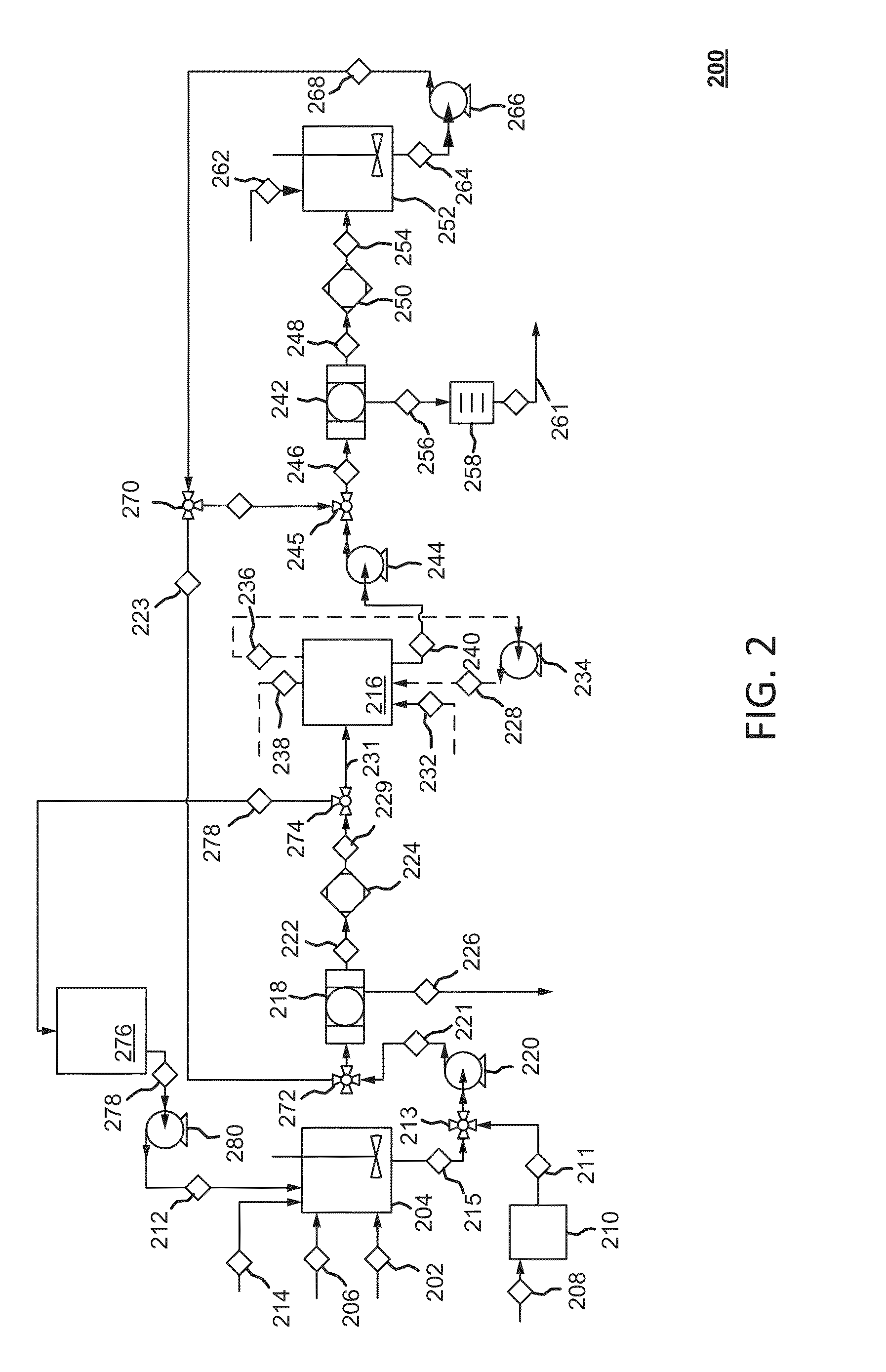Dry sorbent injection (DSI) recovery system and method thereof
a dry sorbent injection and recovery system technology, applied in the direction of bicarbonate preparation, solid waste management, liquid gas reaction process, etc., can solve the problems of high operational cost of dsi systems, reduce operational cost, reduce the concentration of sodium, and reduce the ph of post dry sorbent injection fly ash
- Summary
- Abstract
- Description
- Claims
- Application Information
AI Technical Summary
Benefits of technology
Problems solved by technology
Method used
Image
Examples
examples
[0112]Without intending to limit the scope of the invention, the following examples illustrate how various embodiments of the invention may be performed, made and / or used.
[0113]A normalized stoichiometric ratio (NSR, mole of Na2 injected / mole of SO2 in the gas inlet) for trona of 3.2 was assumed, which corresponds to about a 90 percent (%) removal of SO2 in a power plant utilizing a baghouse for particulate matter control. This usage indicates that a large amount of the reactive portion of trona remains unused, and will be found in the fly ash as sodium carbonate due to calcination of the trona in the DSI process. The approximate composition of fly ash collected downstream of a DSI system operating at an NSR of 3.2 when low sulfur coal is burned were calculated by mass balance and are given below in Table 1. This estimated post-DSI fly ash composition was used as the basis for the Examples reported herein.
TABLE 1Estimated Fly Ash CompositionApproximateComponentweight %Fly ash57Na2CO...
examples 1-5
[0115]Examples 1-5 detailed herein serve as proof of concept experiments to demonstrate the reaction between sodium carbonate and lime found in post-DSI fly ash. It is expected that reaction yields will increase with additional process optimization as known in the art.
[0116]Step 1:
[0117](Formation of sodium hydroxide) This Step involves the formation of sodium hydroxide from the reaction between Na2CO3 and Ca(OH)2 according to Equation 1 herein.
[0118]In Examples 1 to 5, the setup included a stirred 4 liter beaker. Reactants shown in Table 2 were added to the beaker in the quantities specified in the Table 2. These were stirred at ambient temperature and pressure for an hour and then filtered through a vacuum filtration apparatus.
[0119]Next, the pH of the filtrate was measured and the hydroxide concentration was determined by titration. The solids included fly ash and CaCO3, these solids precipitated from the reaction between Na2CO3 and Ca(OH)2 according to Equation 1. The solids wer...
examples 6-10
[0121]Examples 6 to 10 detailed here served as characterization experiments for product yield and purity as a function of NaCl concentration.
[0122]Step 2:
[0123](Synthesis of sodium bicarbonate) Step 2 involves the synthesis of sodium bicarbonate from CO2 and the sodium hydroxide generated in Step 1 as well as the residual, un-reacted sodium carbonate from Step 1 as per Equations 2 and 3 herein. NaCl is added to the solution in order to promote the precipitation of NaHCO3 but it is not consumed in the reaction.
[0124]The laboratory apparatus for Step 2 includes a flask with a fitted disk sitting on the bottom which is configured for CO2(g) flow. The filtrate from Step 1 is placed in the flask and nominally about 15 percent (%) NaCl by weight is added. When the NaCl is dissolved, CO2 (g) is bubbled through the solution at ambient temperature for a minimum of 40 minutes up to 1 hour. A white precipitate forms. The mixture is filtered through a vacuum filtration apparatus and the solid i...
PUM
| Property | Measurement | Unit |
|---|---|---|
| particle size | aaaaa | aaaaa |
| pH | aaaaa | aaaaa |
| particle size | aaaaa | aaaaa |
Abstract
Description
Claims
Application Information
 Login to View More
Login to View More - R&D
- Intellectual Property
- Life Sciences
- Materials
- Tech Scout
- Unparalleled Data Quality
- Higher Quality Content
- 60% Fewer Hallucinations
Browse by: Latest US Patents, China's latest patents, Technical Efficacy Thesaurus, Application Domain, Technology Topic, Popular Technical Reports.
© 2025 PatSnap. All rights reserved.Legal|Privacy policy|Modern Slavery Act Transparency Statement|Sitemap|About US| Contact US: help@patsnap.com



